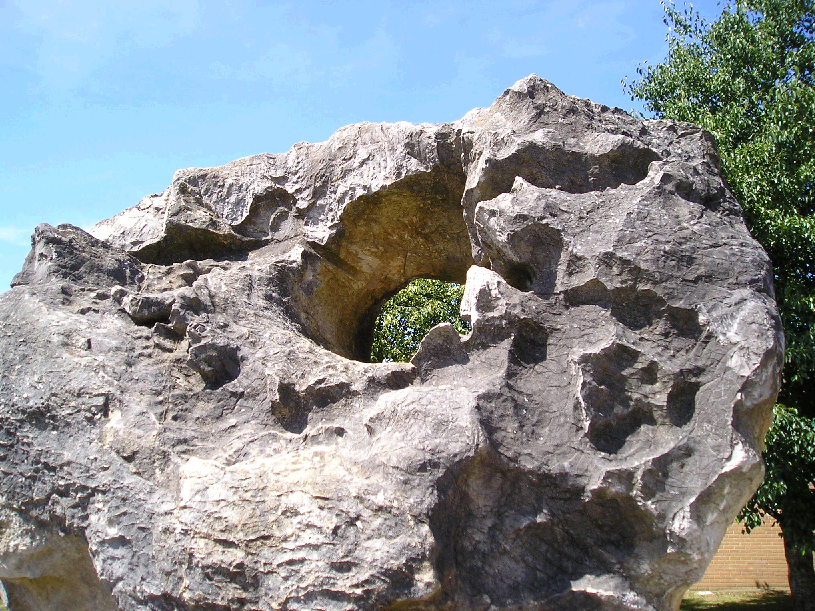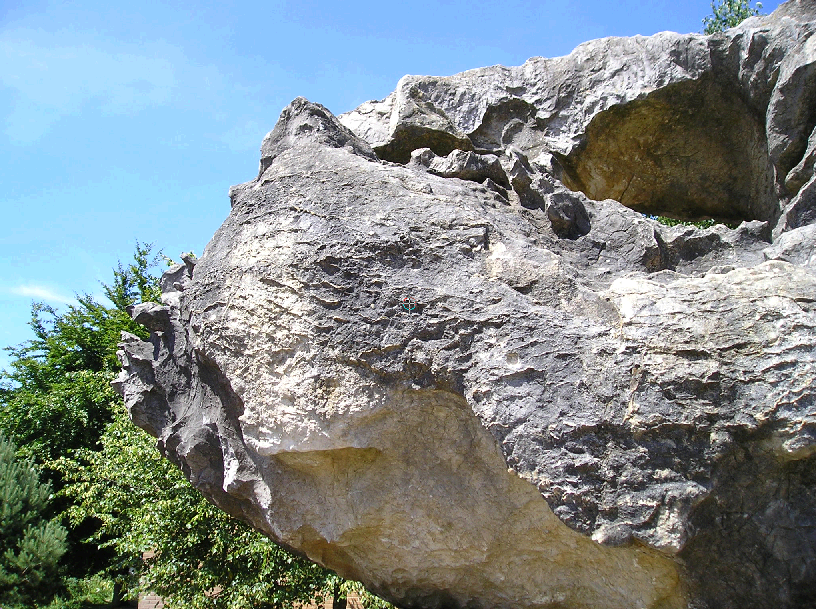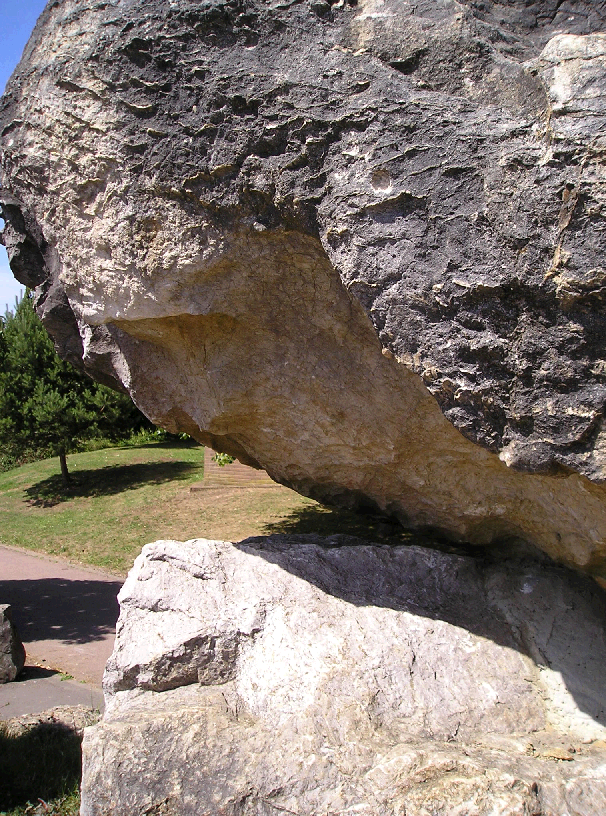
Water-worn limestone


These two rocks are both limestones;
the base rock is known as ‘Napoleon marble’
The base rock is the well-known ‘Napoleon Marble’, a shallow-water algal limestone of Carboniferous age. This type of rock has been described as ‘porcellanous’ or ‘chinastone’, the outcome of shallow water marine conditions in which algae played an important rock-forming role. It is not a true metamorphic marble, but a hard sedimentary limestone. However, in many city centres, polished, it has the character of ‘marble’, taking and retaining a high surface finish and revealing cloudy outlines of calcareous algae.
It has the name Napoleon Marble for historic and sentimental reasons. It was on the cliff tops nearby that the Emperor marshalled his Grande Armée for the projected invasion of England before his better judgement made him call off the venture. The French celebrate the occasion with a monument on the cliff top and the naming of this limestone.